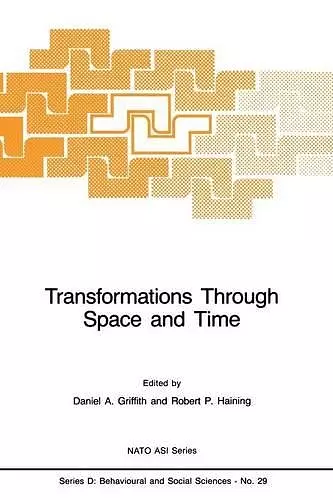Transformations Through Space and Time
An Analysis of Nonlinear Structures, Bifurcation Points and Autoregressive Dependencies
Robert P Haining editor Daniel A Griffith editor
Format:Paperback
Publisher:Springer
Published:13th Oct '11
Currently unavailable, and unfortunately no date known when it will be back

Springer Book Archives
Proceedings of the NATO Advanced Study Institute, Hanstholm, Denmark, August 3-4, 1985In recent years there has been a growing concern for the development of both efficient and effective ways to handle space-time problems. Such developments should be theoretically as well as empirically oriented. Regardless of which of these two arenas one enters. the impression is quickly gained that contemporary wO,rk on dynamic and evolutionary models has not proved to be as illuminating and rewarding as first anticipated. Historically speaking. the single. most important lesson this avenue of research has provided. is that linear models are woefully inadequate when dominant non-linear trends and relationships prevail. and that independent activities and actions are all but non-existent in the real-world. Meanwhile. one prominent imp 1 ication stemming from this 1 iterature is that the easiest modelling tasks are those of specifying good dynamic space-time models. Somewhat more problematic are the statistical questions of model specification. parameter estimation. and model validation. whereas even more problematic is the operationalization of evolutionary conceptual models. A timely next step in spatial analysis would seem to be a return to basics. with a pronounced focus both on specific problems (and data) and on the mechanisms that transform phenomena through space and/or time'. It appears that these transformation mechanisms must embrace both non-linear and autoregressive formalisms. Given. also. the variety of geographic forms. they must allow for bifurcation points to emerge. too.
ISBN: 9789401084727
Dimensions: unknown
Weight: 522g
336 pages
Softcover reprint of the original 1st ed. 1986